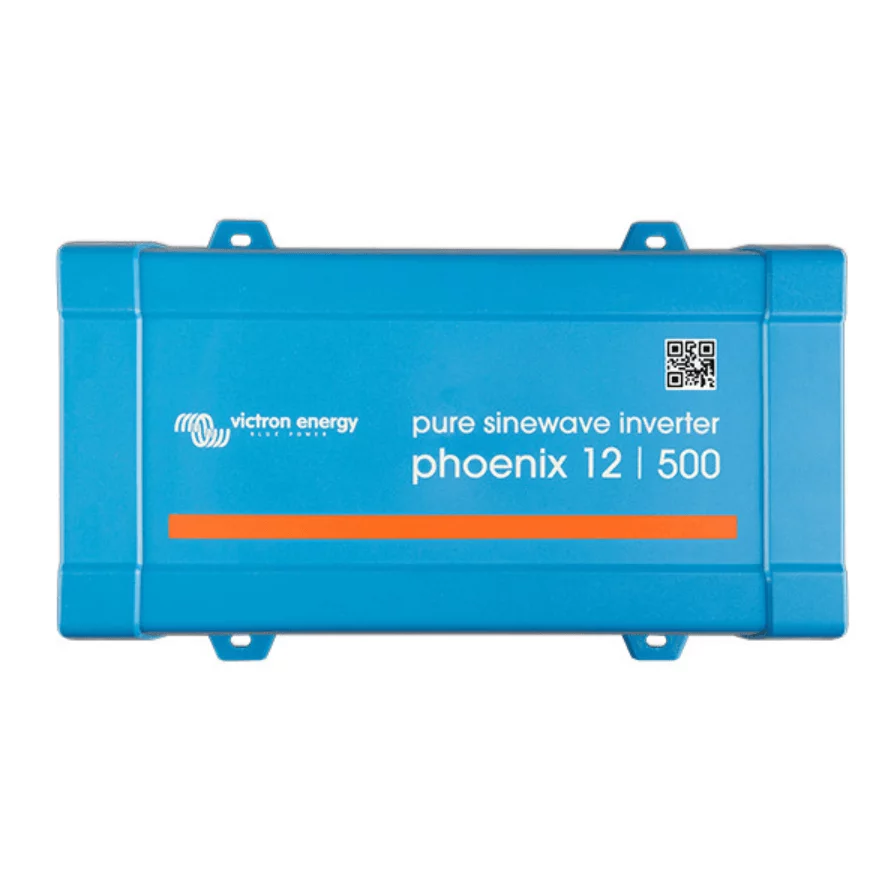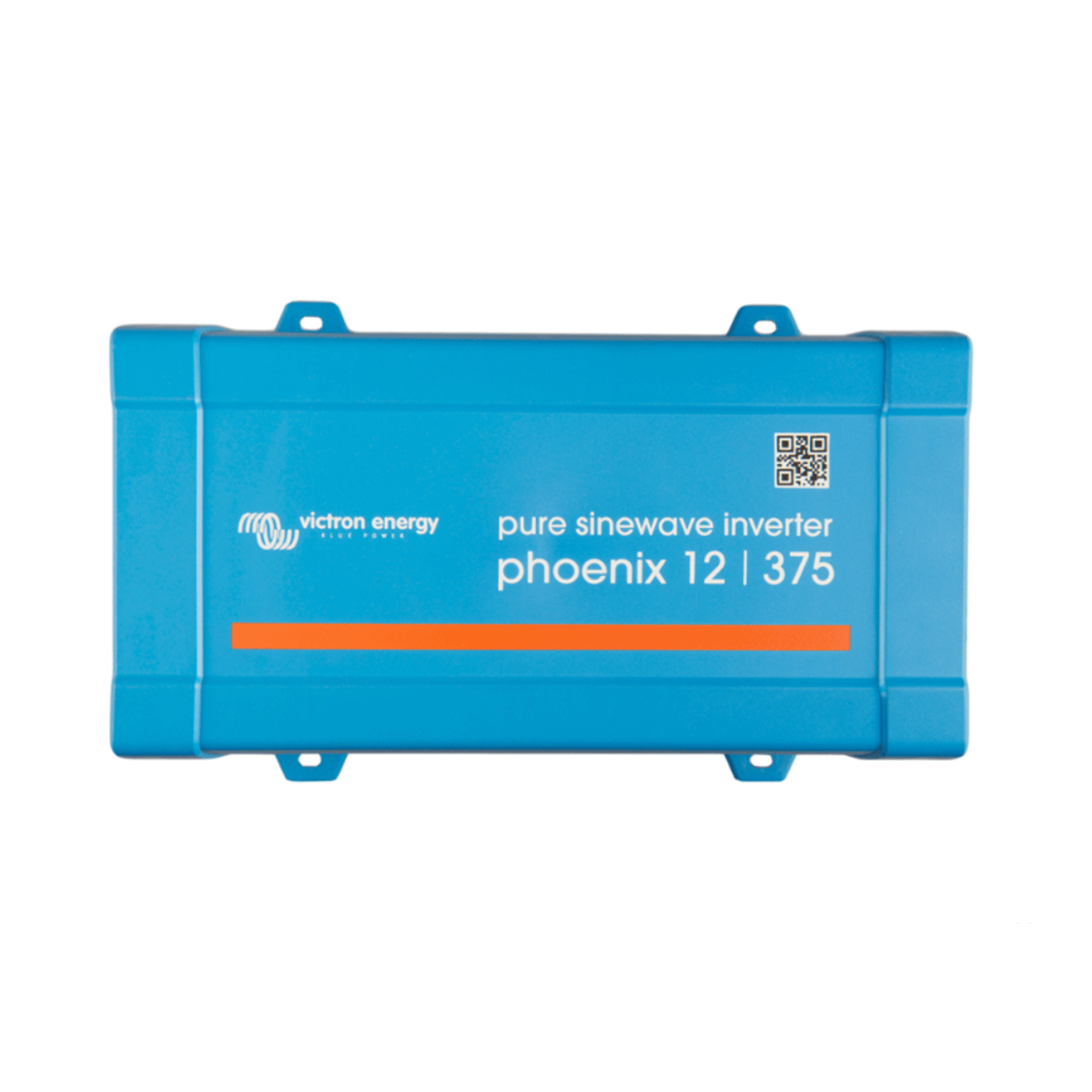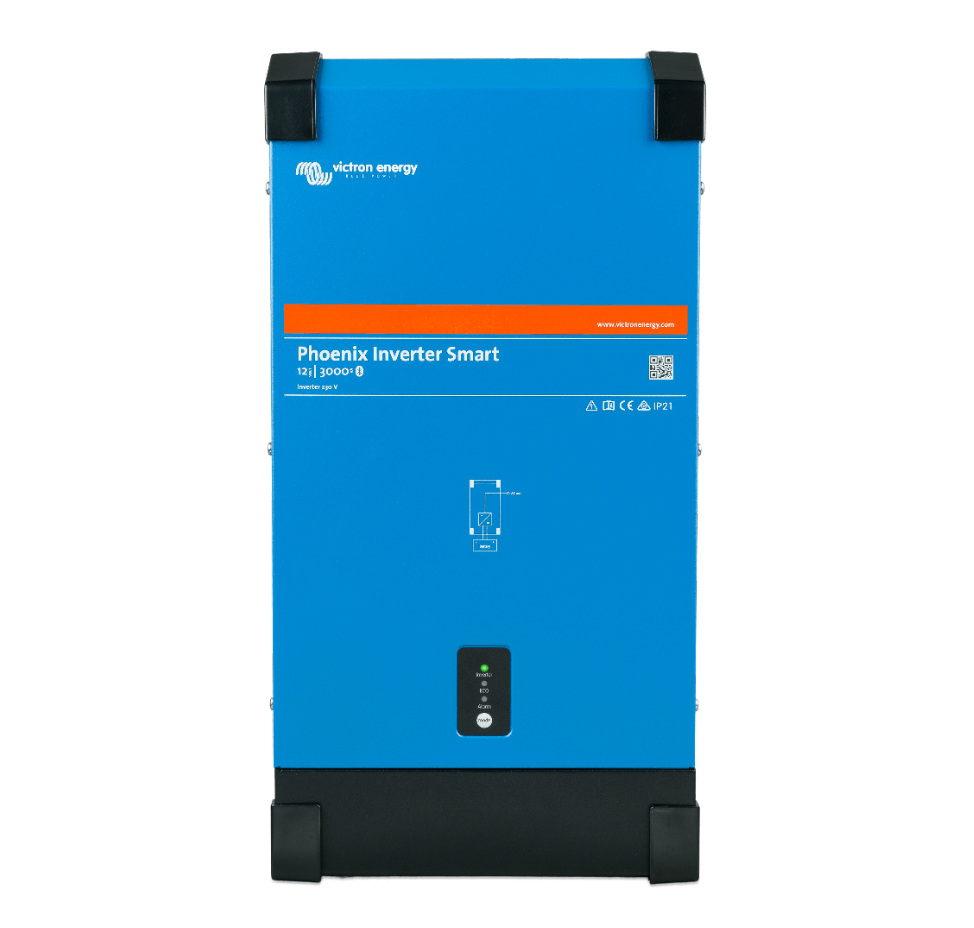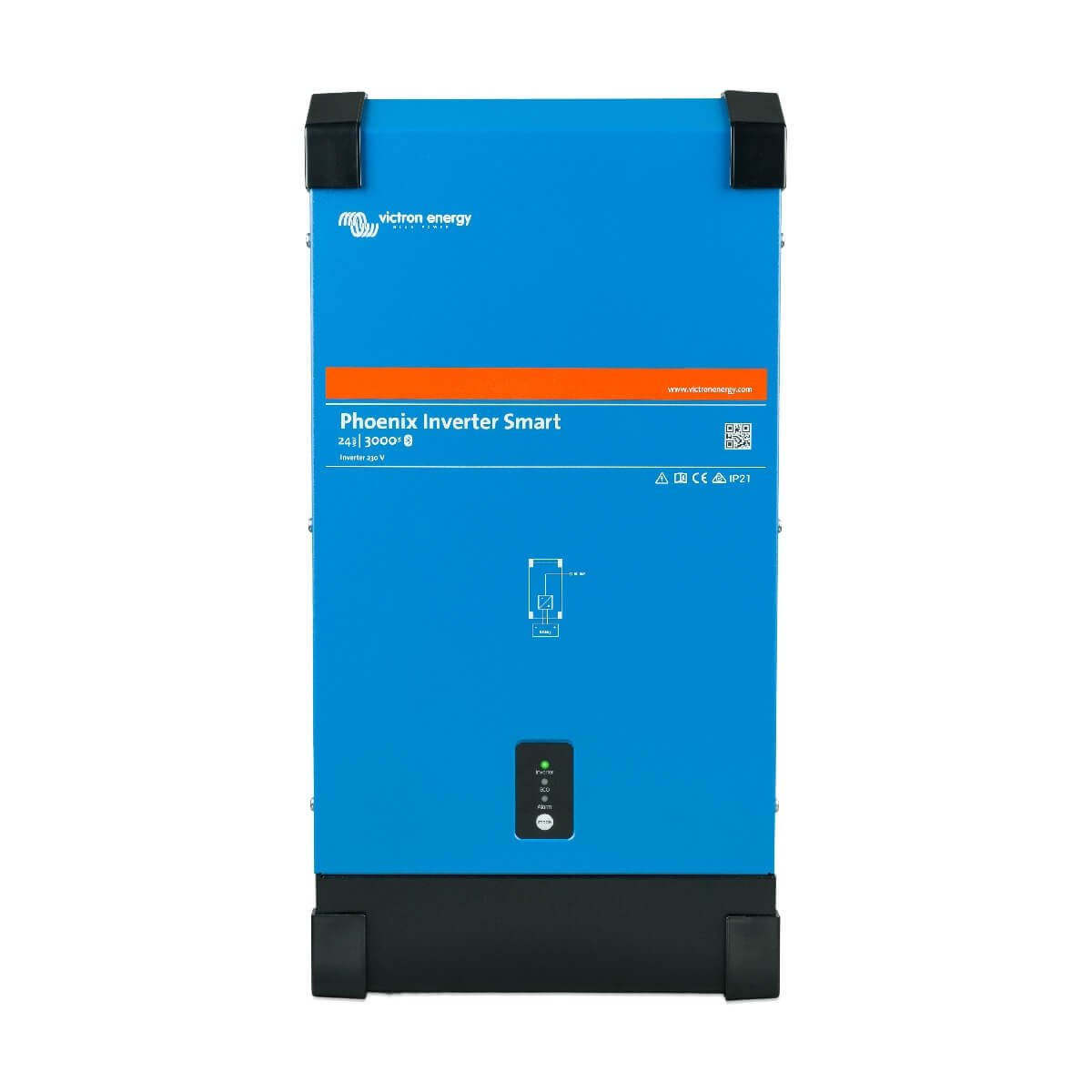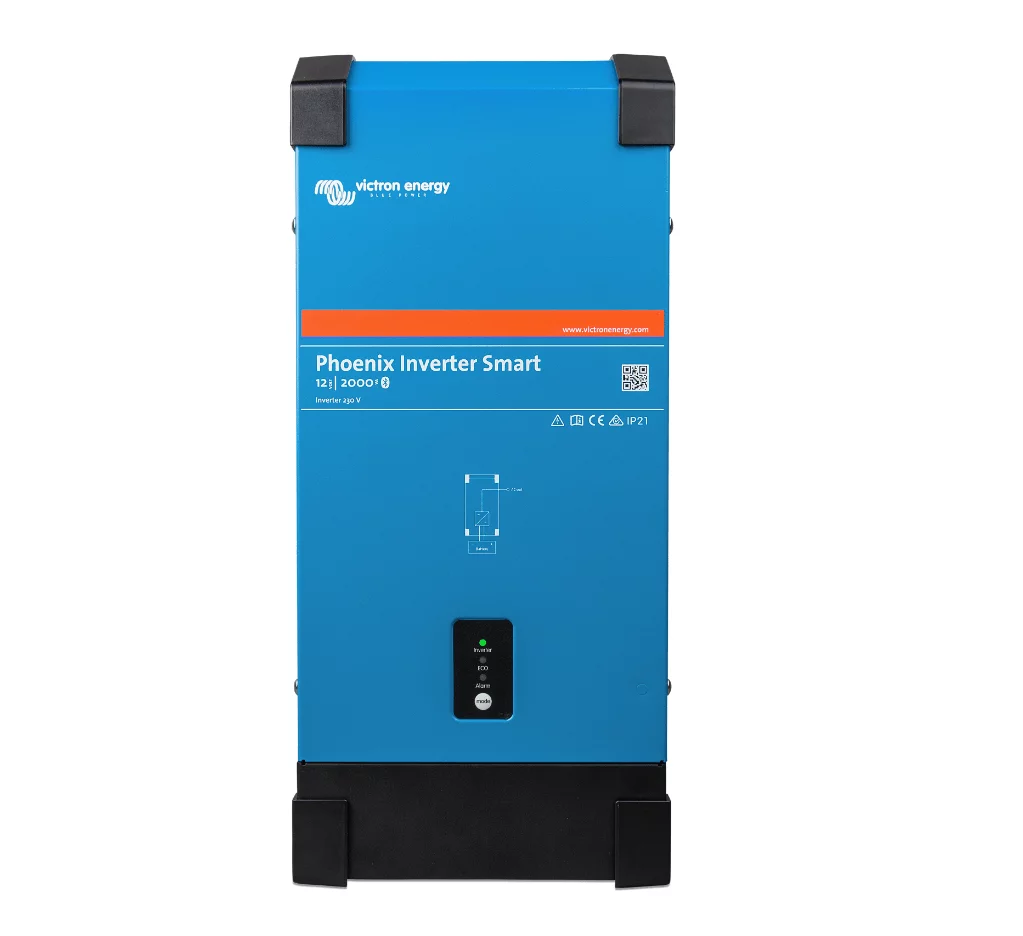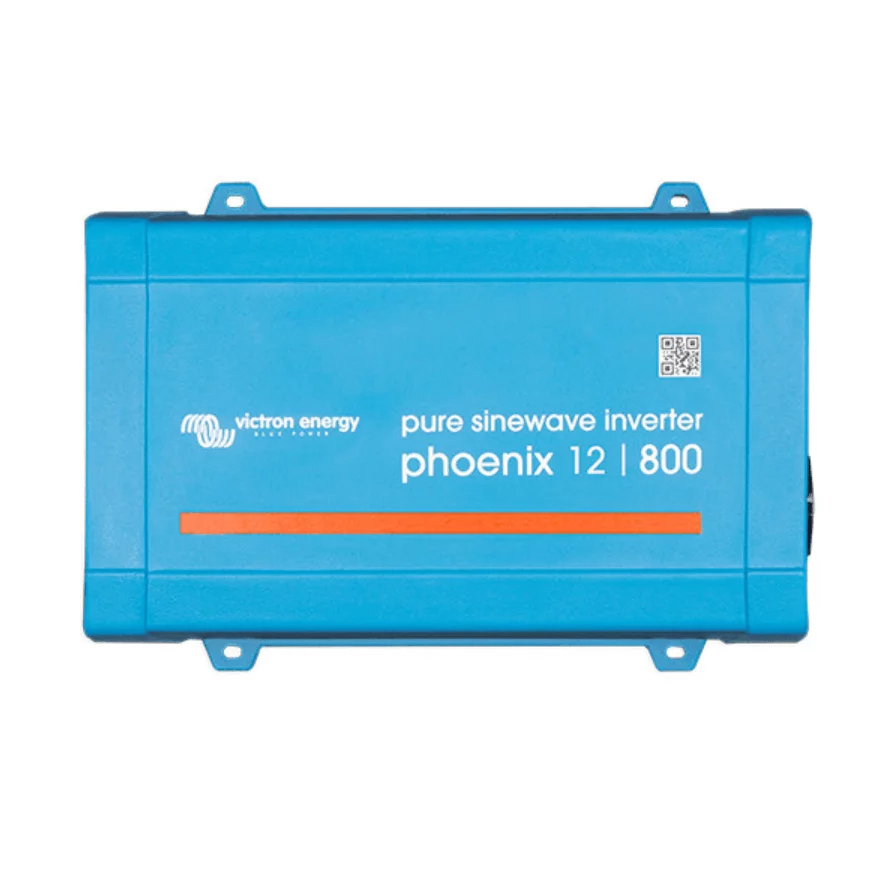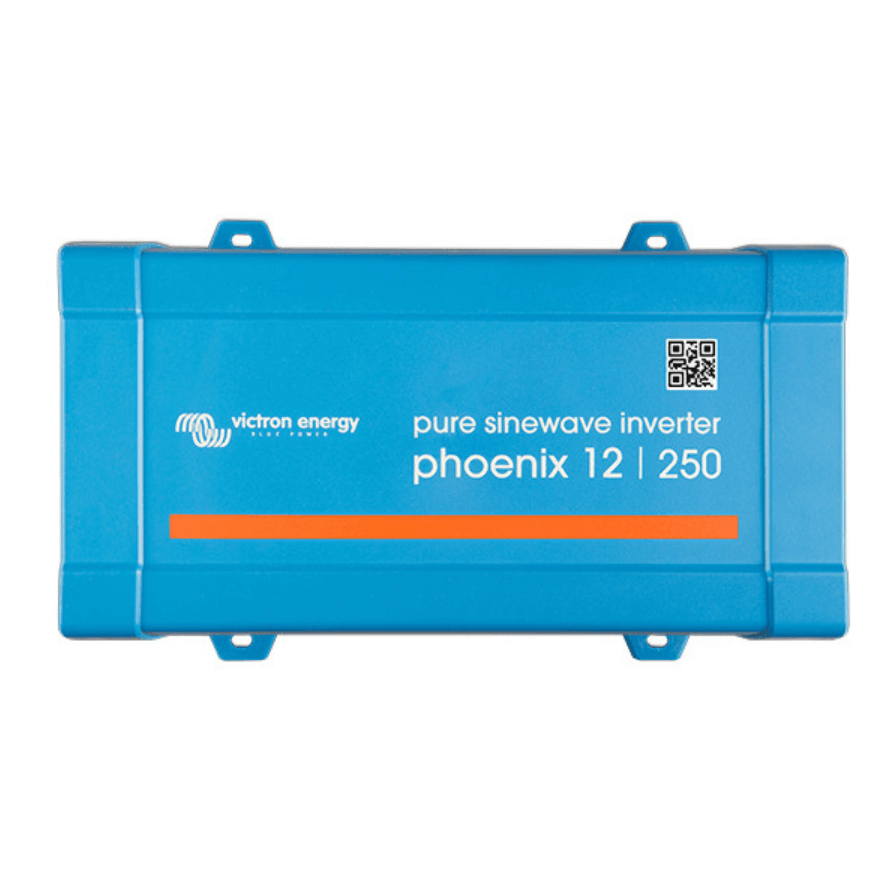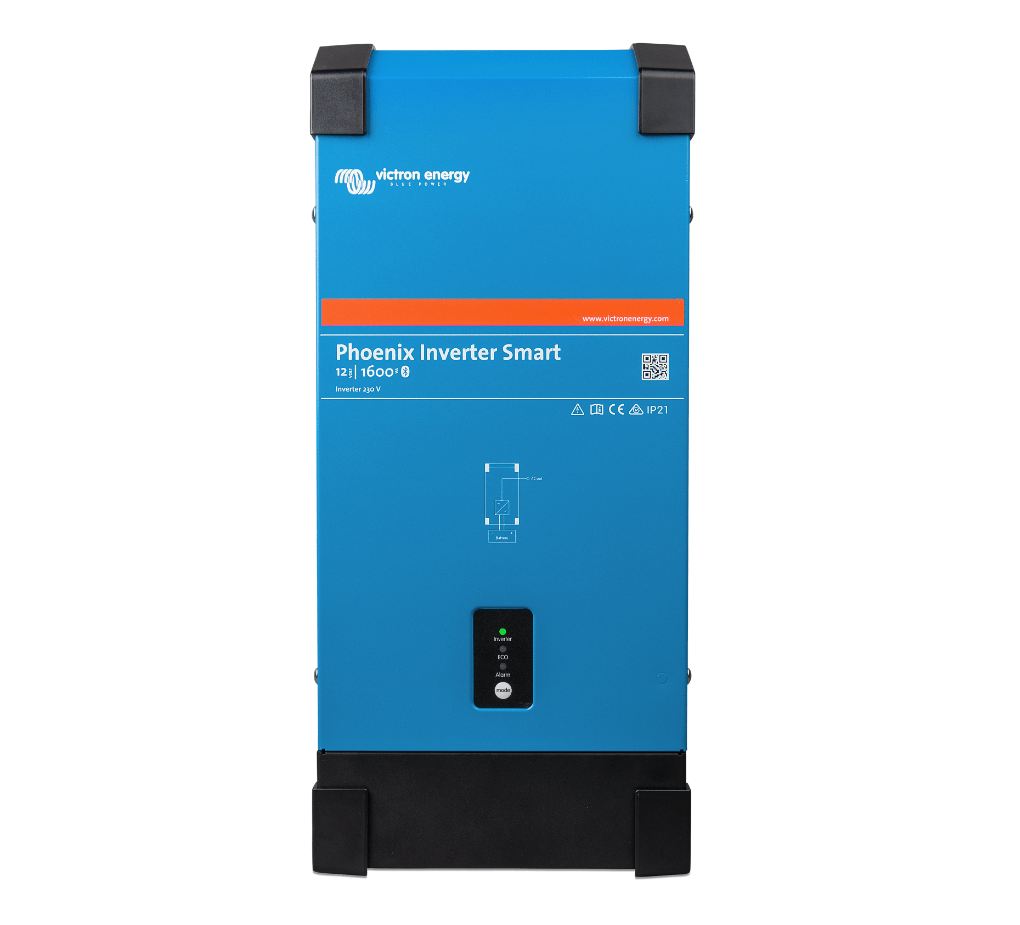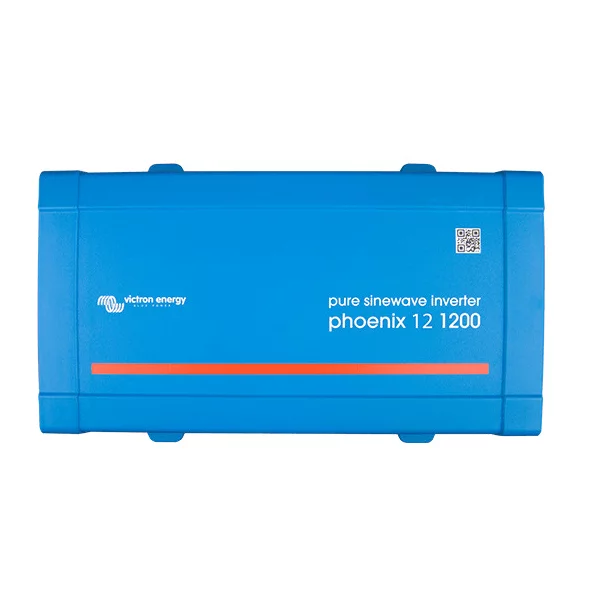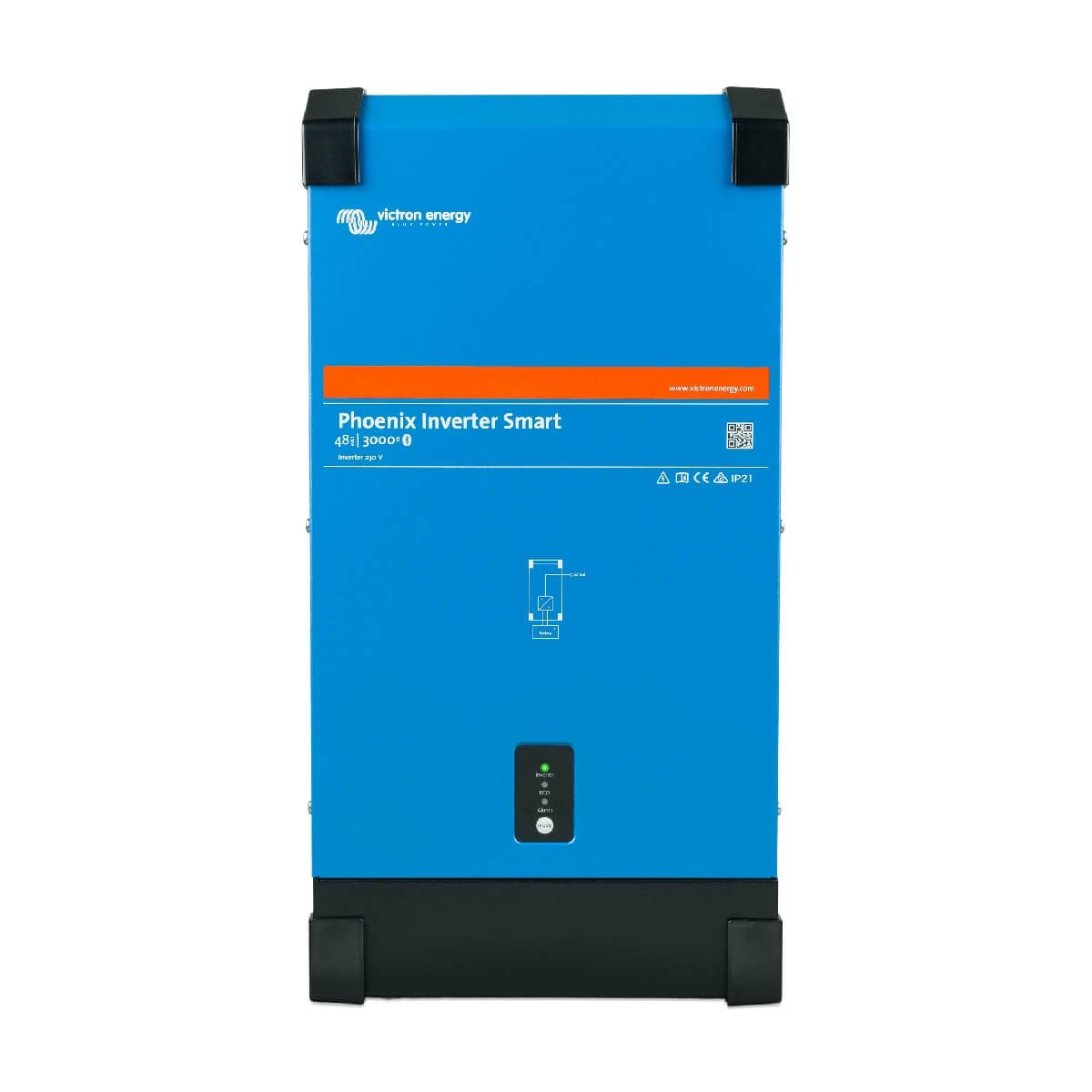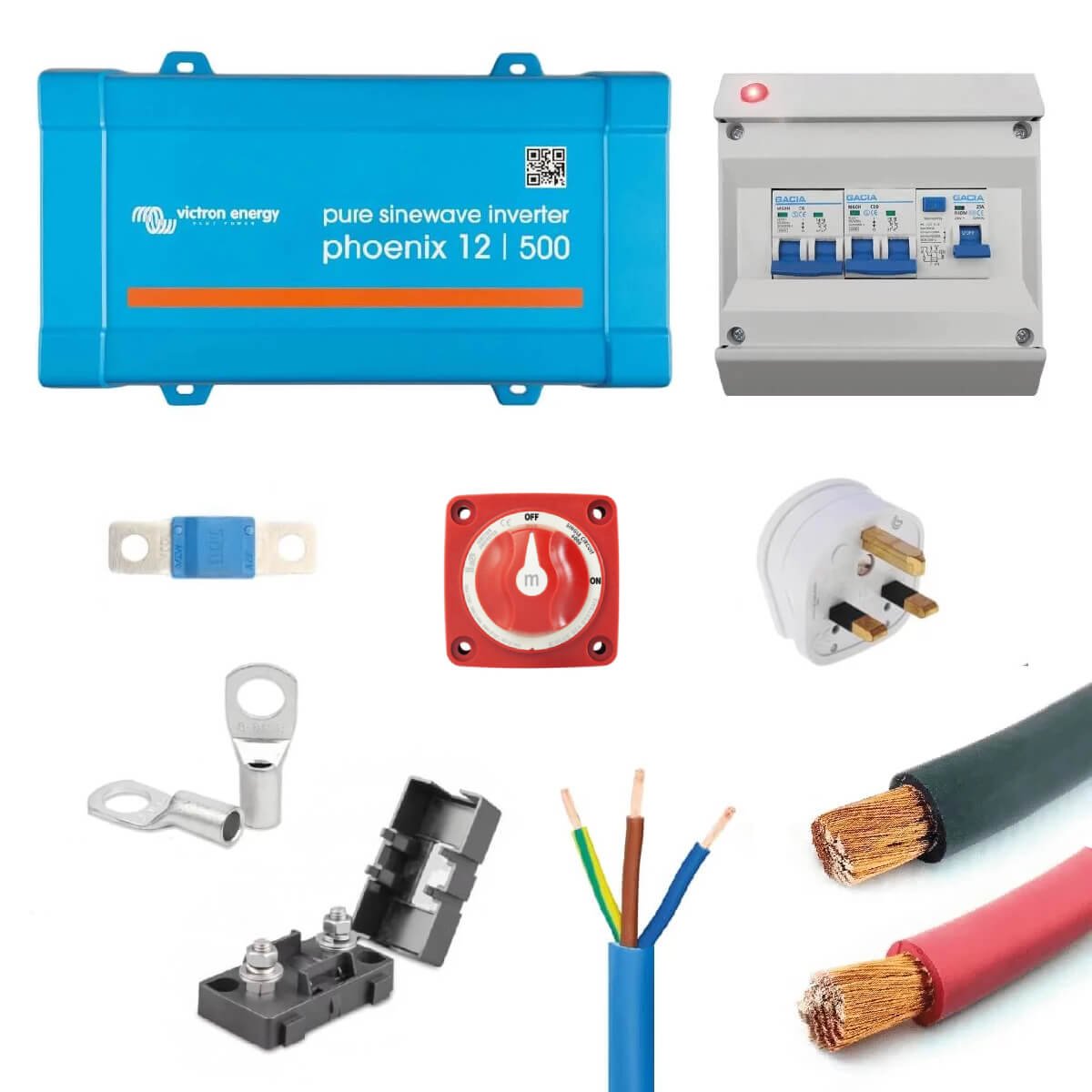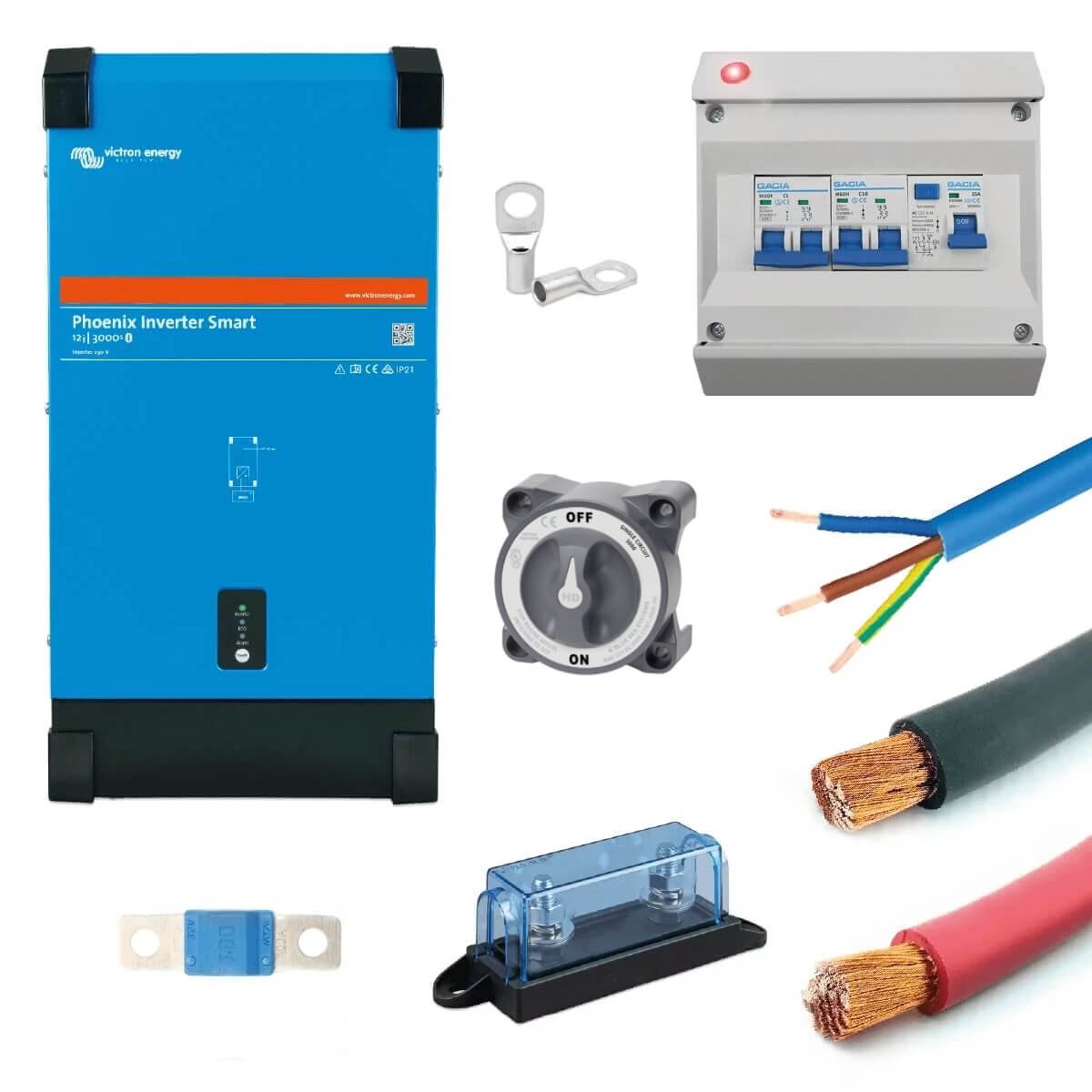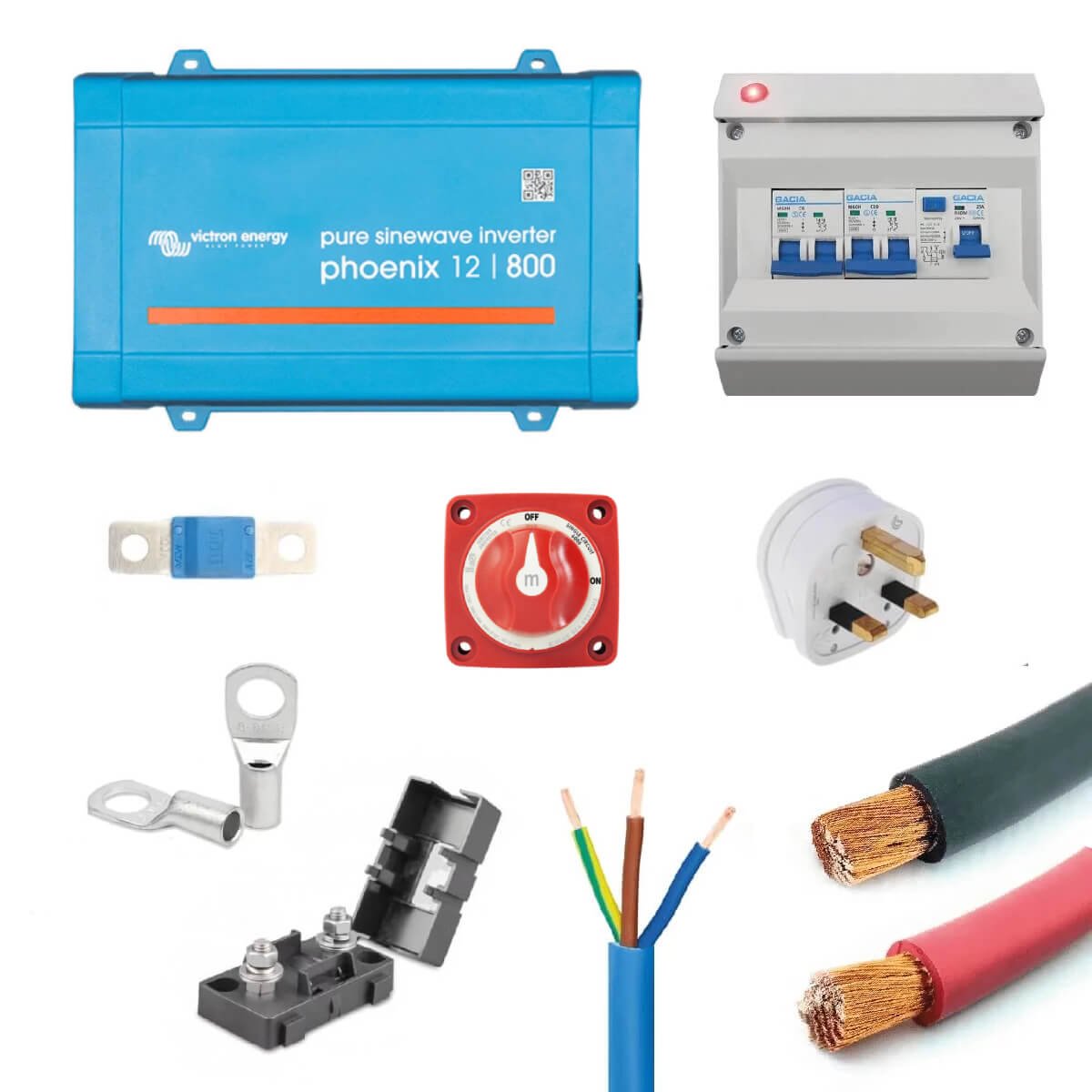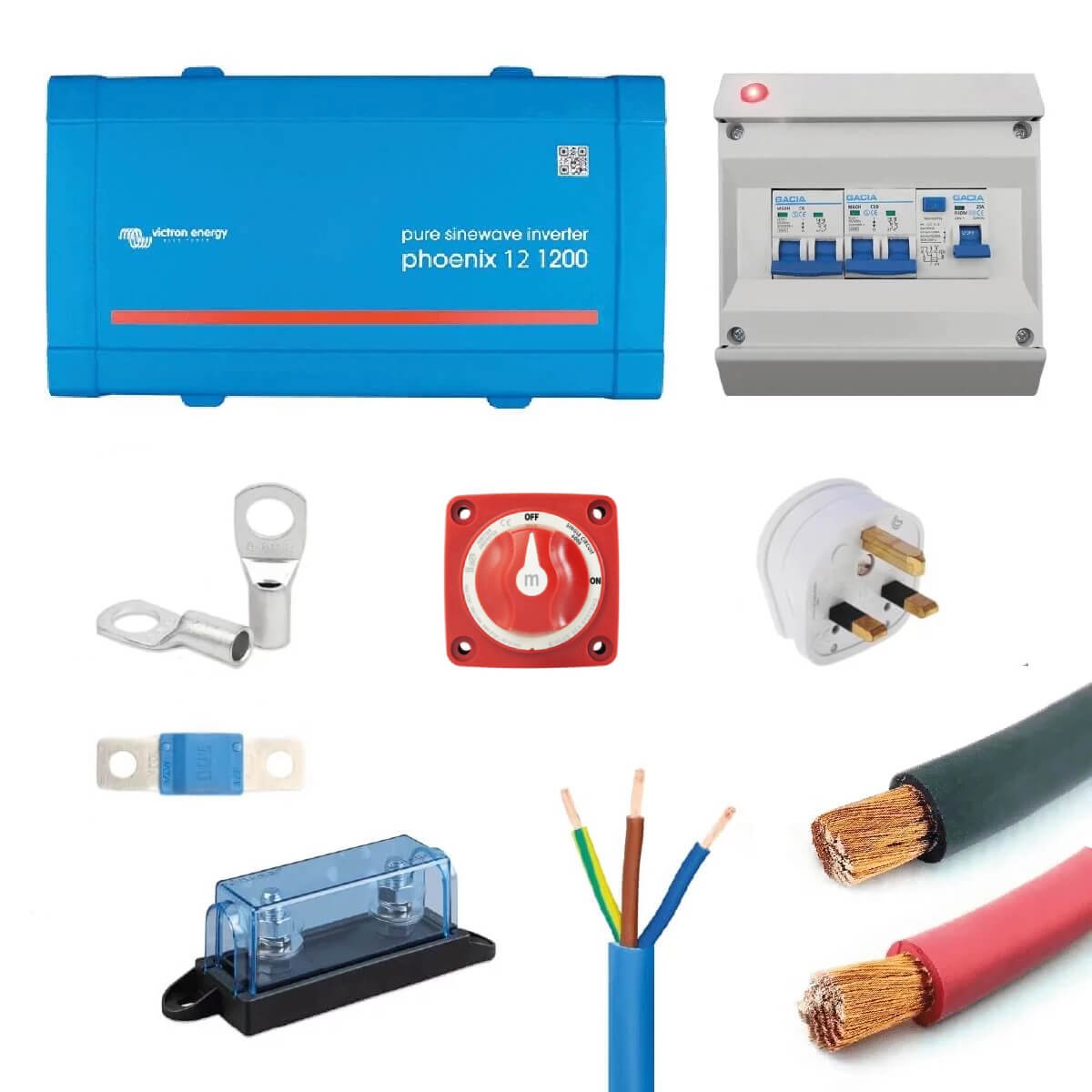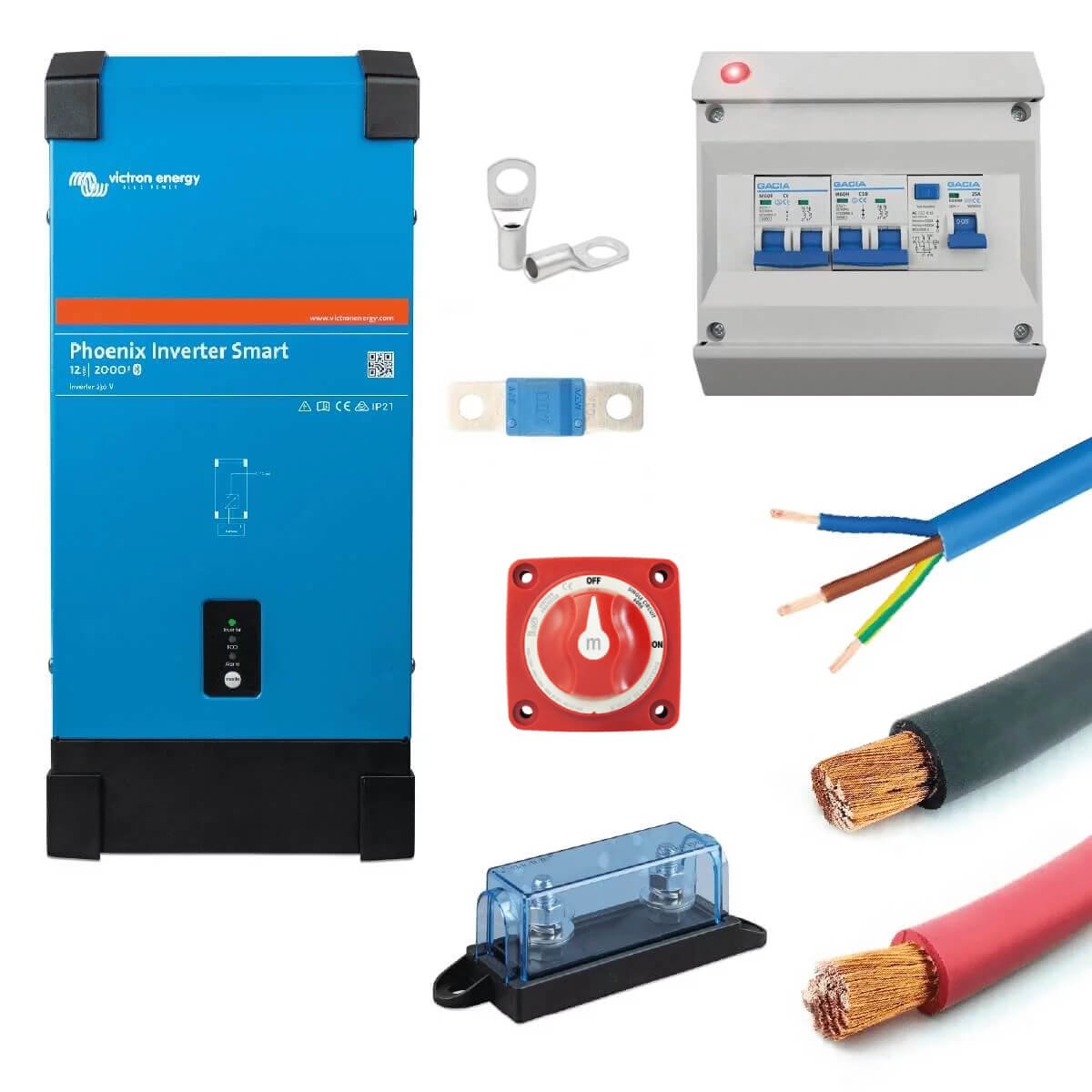Victron Phoenix inverters
What is the Victron Phoenix inverter?
The Victron Phoenix inverter is a pure sine wave inverter, capable of converting 12/24/48V DC (direct current) into 230V AC (alternating current). This allows you to power mains appliances in a campervan electrical system. Anyone looking to power 230V appliances off-grid will need to install a campervan inverter.
The Phoenix inverter is suitable for anyone with a fully off-grid system who won’t be recharing their leisure batteries via electric hook up. For anyone looking to include hook up charging in their system, see the Victron MultiPlus inverter/charger.
Pure sine wave inverters are suitable for powering all types of appliances, unlike quasi (modified) sine wave inverters which only create an approximation of an AC waveform.
If you want to monitor your inverter wirelessly, you can purchase the VE.Direct smart dongle which connects to the inverter’s VE.Direct port. This allows you to monitor your power usage from the Victron Connect app.
Which inverter do I need?
The Victron Phoenix inverter is available in 12V, 24V and 48V models. The 12V model is commonly used in campervan electrical systems as these usually include 12V leisure batteries. The 12V inverter is available in wattage ratings from 250W up to 3000W, and the 24/48V versions go up to 5000W. The exact model you require will depend on the appliances you would like to power off-grid. Simply add up the total wattage of each 230V appliance you will use at any one time to calculate the rating you need.
Below you can see the types of appliances you can power off-grid with the range of Victron inverters. This is based on the typical wattage of these appliances (e.g. a hairdryer is ~1600W) and is assuming only one of these appliances would be used at any one time (e.g. a hairdryer and a microwave can be used with a 1600W, but not at the same time. To use both of these devices at the same time, you would need a 3000VA Victron inverter).
The Phoenix inverter is available from 250VA, however we have included inverters from 500VA upwards. We would recommend installing the 500W inverter as a minimum, as this will ensure you can power most low wattage products, and the price difference between the 250VA and the 500VA is negligible.
It’s worth noting that Victron inverters can deal with a load 130% of their rated power for up to 30 minutes. This means that a 500VA inverter would be able to power appliances up to 650VA for 30 minutes.
Most inverter manufacturers use watts (W) to specify inverter power. However, Victron use volt-amperes (VA) instead. VA describes apparent power, whereas W describes real power. The distinction between these can be important when designing your electrical system. To learn more, check out this article, where we discuss the differences between VA and W and how this affects your choice of inverter or inverter/charger.
The below inverters are typically capable of running the listed alliances and those that the previous inverter could power. Please note, the VA rating of appliances can vary massively and this can’t always be determined from the product wattage label.
Campervan electrics leaving you confused?
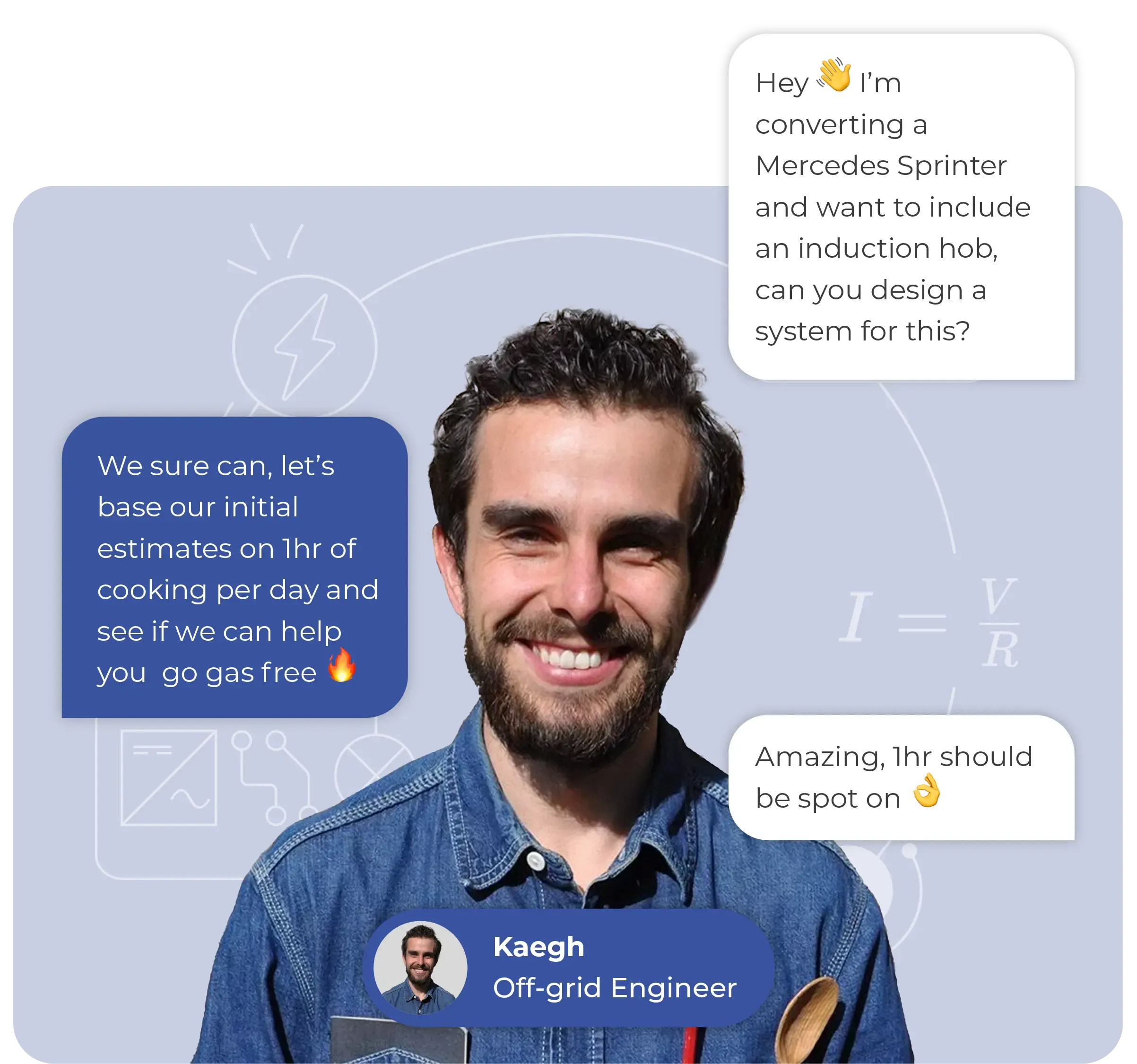
Victron inverter wiring diagram
This Victron inverter wiring diagram shows how to wire a Victron Phoenix inverter into a campervan electrical system.
The inverter should be connected to the system via a positive and negative busbar with correctly sized cable and using a correctly sized fuse or breaker. The Victron manual for your specific Phoenix inverter will detail the exact diameter cable and fuse size to use.
Power going out to any 230V loads should be connected via a consumer unit. Make sure to select a suitably sized MCB for the appliances you will be running. For some guidance on this, check out our consumer unit article.
Both the inverter and the consumer unit should be earthed. You can ground either to the vehicle chassis or via the negative busbar.
All of our inverter kits come with a detailed wiring diagram and installation guide. This explains exactly how to install the specific inverter model. Plus, all kits are provided with all components needed to fully install the inverter as part of your electrical system.


